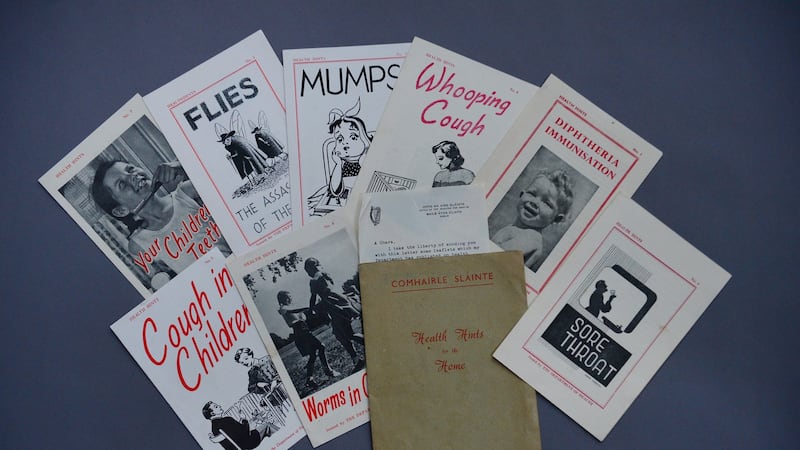In the mid-1950s, the Department of Health circulated an envelope of eight pamphlets to houses countrywide, with an accompanying letter from minister for health James Ryan.
These “Health Hints for the Home” offer an insight into the chief public health concerns – and contemporary medical advice – of that decade. Though some of the advice is now obsolete – even dangerous – some remains relevant today.
The second of these leaflets focused on mumps. We now know that children under 16 years of age should not be given aspirin, and that teenagers, as well as adults, have a higher risk of developing complications including encephalitis, viral meningitis and deafness – in addition to painful swelling of the testicles and infertility in boys and men.
Current treatment advice includes to drink plenty of fluids, but to avoid drinks known to stimulate saliva production, such as fruit juice, as excess saliva can cause pain. Cold compresses are suggested for swollen glands, and a diet of foods that do not require much chewing, such as soup, mashed potatoes and scrambled eggs.
Here is what was included in the second pamphlet.
Cause and Frequency
Mumps, a disease which is very painful, though rarely serious, occurs in epidemics, with the infection spread from case to case by droplets produced by breathing, coughing or sneezing. As a rule, mumps is only contracted once in a lifetime, and while it may infect people of any age, it most frequently occurs in children between five and 15 years.
After contact with infection, a period of 17 to 21 days is quite usual before the first symptoms appear.

Symptoms
The first sign of mumps, as a rule, is pain and stiffness immediately in front of, and below the ears. This is caused by swelling of the parotid glands – small glands about the size of a penny which lie under the cheek in front of each ear. First, the gland on one side, and then the other, may swell, and this will most probably be followed by swelling of the glands under the angles of the jaw. Since these are the glands which produce salivation or “mouth watering”, they are often more painful before and during meals.
With the swelling of the glands, the temperature usually rises. Swelling and temperature usually reach their maximum in 24 to 48 hours, and then gradually return to normal over a period of about a week.
Infectious Period
The infectious period lasts from the first appearance of the symptoms until the swelling disappears, and as a rule patients are isolated until one week after the swelling has gone down. Contacts may be isolated for 21 days after exposure to a case, but this is not usually done.

Complications
There are rarely complications with children. Complications such as inflammation of the sex glands may occur, occasionally, in adults.
Treatment
Treatment consists in isolating the patient in bed while temperature and swelling persist. Antiseptic mouth-washes and careful attention to tongue and teeth prevent the inflamed glands becoming septic.
Diet
Plenty of fluids and a soft diet (milk puddings, soups etc) should be given while there is fever. The doctor may prescribe mild sedatives, and may recommend 10 grains of aspirin about 20 minutes before food, to ease the pain which eating may bring on.
Summary
If you suspect that your child has mumps, isolate him; keep him warm in bed; give him plenty of fluids, a soft diet, and send for the doctor.
Health Hints for the home
Part 1: The menace of diphtheria
Part 2: If your child has mumps
Part 3: Flies on food
Part 4: Pain in the throat
Part 5: Coughs in Children
Part 6: Whooping gasp for air
Part 7: Dental health
Part 8: Worms in children









